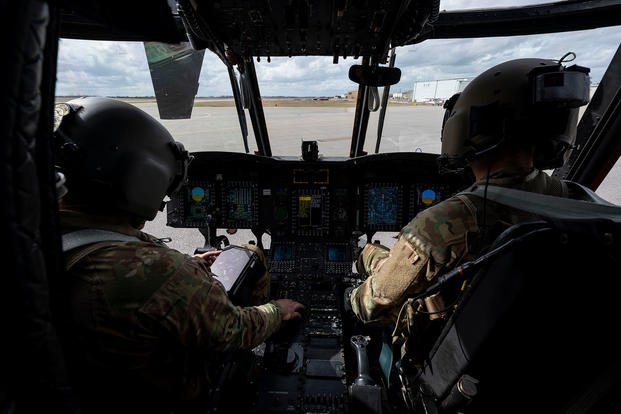
AURORA, Colorado — The Air Force announced this week that it is bringing back warrant officer ranks, but officials clarified Tuesday it is not looking at developing aviators through that training — despite an ongoing pilot shortage and other service branches using warrant officers for those types of missions.
The service will instead focus on information technology and cyber operations for those ranks, and not pursue pilot tracks, Air Force Chief of Staff Gen. David Allvin told Military.com during a media roundtable at the Air and Space Forces Association’s Warfare Symposium conference.
“We believe that there’s something specific about this very precise career field, this technologically oriented career field where the perishability of it and the requirement of it to maintain at the cutting edge is more along the lines of what we’d expect in a warrant officer track,” Allvin said.
On average, the Air Force has brought in around 1,300 new pilots each year for nearly a decade, short of its goal of around 1,500 annually. Recent shortages have been attributed to a range of issues, such as delays in getting new engines into T-38 Talon training jets, a lack of instructors, and holdups in getting new airmen into the training pipeline.
A document detailing the change to bring back warrant officers, a plan first reported by Military.com last week, sets out steps “to develop a concept of operations (CONOP) to establish a training pipeline to reintroduce a USAF non-aviation warrant officer (WO) program as a technical corps NLT October 2024.”
The Air Force has previously shot down the idea of using warrant officers as a way to fill the ongoing pilot shortage with aviators. In 2018, Air Force officials said at a conference that the Rand Corp. think tank was tasked with looking at the idea but its study did not recommend it, Military.com reported at the time.
Warrant officers are used by the other service branches as highly technical subject matter experts and single-track leaders. They typically come from the enlisted ranks. One of the main issues with the warrant officer track for pilots is that those airmen would command a lower salary than their officer pilot peers, and would be more likely to be lured out of service by higher-paying private-sector jobs.
“A [warrant officer] component would incur lower personnel costs than the [commissioned officer] workforce it displaced, but the lower compensation levels responsible for the lower personnel costs would also produce lower retention rates. With lower retention, training costs would go up,” Rand reported in its study.
Warrant officers can currently fly in the Army, and the Navy had a flying chief warrant officer program from 2006 to 2014.
Allvin said the Air Force is looking at innovative ways to overcome shortfalls in other career fields, such as pilots, but said the warrant officer program made the most sense for the IT and cyber career fields.
Chief of Space Operations Gen. Chance Saltzman also told Military.com during a roundtable that the Space Force is not looking at starting its own service-specific warrant officer program for similar career fields.
Related: Air Force Eyes Bringing Back Warrant Officers After Decades-Long Absence






